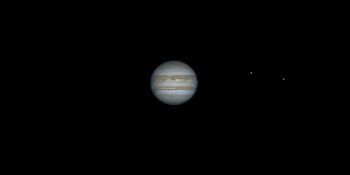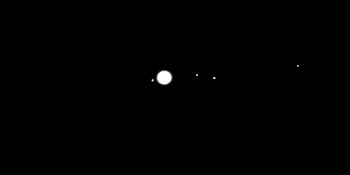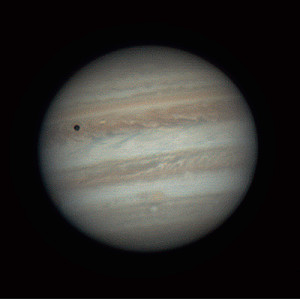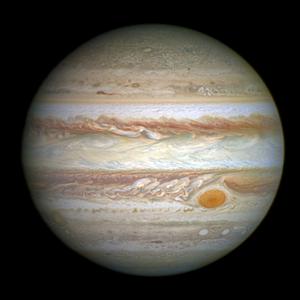Glossary term: वायुरुप ग्रह (गॅस जायंट)
Description: गॅस जायंट हा एक महाकाय ग्रह आहे जो मुख्यतः हायड्रोजन आणि हेलियमने बनलेला असतो. हे वायू आंतरतारकीय आणि आंतरग्रहीय अवकाशात वायुरूपात आढळतात, म्हणून हे नाव. तथापि, गॅस जायंटमधील बहुतेक हायड्रोजन आणि हेलियम प्रत्यक्षात द्रव स्थितीत आहेत.
गॅस जायंटमध्ये खडकाळ गाभा असतो असे मानले जाते जे हायड्रोजन आणि हेलियमच्या जाड थरांनी वेढलेले असतात. ग्रहाच्या सर्वात खोल भागांमध्ये हे वायू द्रव स्वरूपात संकुचित असतात ज्यामध्ये मेटलिक हायड्रोजनचा (धातूरूपातील हायड्रोजनचा) महासागर असतो असे मानले जाते. बाहेरील थरांमध्ये हायड्रोजन आणि हेलियम वायूच्या स्वरूपात असतात. वातावरणातील इतर घटक ढग आणि पाऊस तयार करू शकतात. सर्वात थंड गॅस जायंटमध्ये वरच्या थरातील ढग पाण्याचे किंवा अमोनियाच्या वाफेचे बनलेले असू शकतात. थंड गॅस जायंटच्या खोल, गरम थरांमध्ये आणि गरम गॅस जायंटच्या बाहेरील थरांमध्ये ढग हे लोह आणि खनिजांचे बनलेले असू शकतात जे साधारणपणे खोलीच्या तपमानावर घन असतात.
सूर्यमालेतील दोन सर्वात मोठे ग्रह, गुरू आणि शनी, हे गॅस जायंट आहेत.
Related Terms:
See this term in other languages
Term and definition status: The original definition of this term in English have been approved by a research astronomer and a teacher The translation of this term and its definition is still awaiting approval
The OAE Multilingual Glossary is a project of the IAU Office of Astronomy for Education (OAE) in collaboration with the IAU Office of Astronomy Outreach (OAO). The terms and definitions were chosen, written and reviewed by a collective effort from the OAE, the OAE Centers and Nodes, the OAE National Astronomy Education Coordinators (NAECs) and other volunteers. You can find a full list of credits here. All glossary terms and their definitions are released under a Creative Commons CC BY-4.0 license and should be credited to "IAU OAE".
If you notice a factual or translation error in this glossary term or definition then please get in touch.
Related Media
Jupiter's Rotation, by Vishal Sharma, India
Credit: Vishal Sharma/IAU OAE
License: CC-BY-4.0 Creative Commons Attribution 4.0 International (CC BY 4.0) icons
Jupiter Moons Movie2, by Nicolas Hurez, Paul-Antoine Matrangolo, and Carl Pennypacker, United States of America
Credit: Nicolas Hurez, Paul-Antoine Matrangolo and Carl Pennypacker/IAU OAE
License: CC-BY-4.0 Creative Commons Attribution 4.0 International (CC BY 4.0) icons
Jupiter, Io and its shadow, by Ralf Burkart, Germany
Credit: Ralf Burkart/IAU OAE
License: CC-BY-4.0 Creative Commons Attribution 4.0 International (CC BY 4.0) icons
Jupiter
Credit: NASA, ESA, and A. Simon (Goddard Space Flight Center) credit link
License: CC-BY-4.0 Creative Commons Attribution 4.0 International (CC BY 4.0) icons
Saturn
Credit: NASA, ESA, A. Simon (Goddard Space Flight Center), and M.H. Wong (University of California, Berkeley) credit link
License: CC-BY-4.0 Creative Commons Attribution 4.0 International (CC BY 4.0) icons













